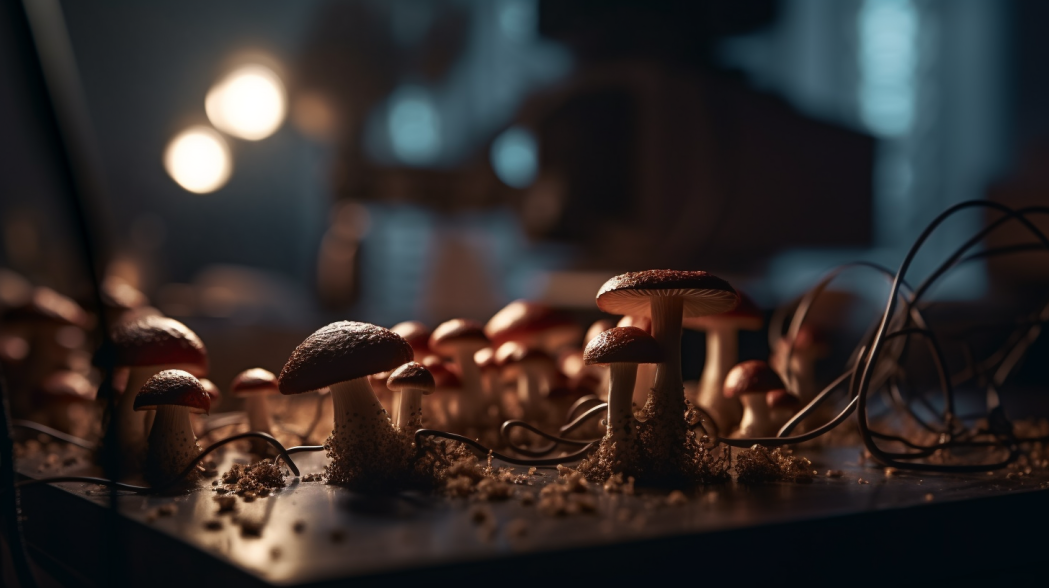Move over, birds and bees. Mushrooms may have just become the new romantic symbol of the forest. Scientists have discovered that fungi generate electrical signals, which can be used to communicate with each other and transfer vital nutrients to trees. It’s like a natural underground internet!
The study focused on a specific type of fungi called ectomycorrhizal, which is found commonly on trees such as pine, oak, and birch. These fungi create a sheath around the roots of the trees and develop into vast underground networks that absorb vital nutrients from the soil and transfer them to the trees.
Scientists have been studying the possibility of electrical signal transfer between mushrooms and across trees via the mycelial networks. It is thought that fungi generate electrical signals in response to external stimuli and use these signals to communicate with each other, coordinating growth and other behavior.
Now, a group of researchers has recently headed to the forest floor to examine small, tan-colored ectomycorrhizal mushrooms known as Laccaria bicolor. Attaching electrodes to six mushrooms in a cluster, the researchers discovered that the electrical signals increased after rainfall.
“In the beginning, the mushrooms exhibited less electrical potential, and we boiled this down to the lack of precipitation,” says Yu Fukasawa from Tohoku University, who led the project along with Takayuki Takehi and Daisuke Akai from the National Institute of Technology, Nagaoka College, and Masayuki Ushio from the Hakubi Center, Kyoto University (presently at the Hong Kong University of Science and Technology). “However, the electrical potential began to fluctuate after raining, sometimes going over 100 mV.”
The potential electrical signal transfer across mushrooms and its directionality. Credit: Yu Fukasawa The researchers correlated this fluctuation with precipitation and temperature, and causality analysis revealed that the post-rain electric potential showed signal transport among mushrooms. This transport was particularly strong between spatially close mushrooms and demonstrated directionality.
“Our results confirm the need for further studies on fungal electrical potentials under a true ecological context,” adds Fukasawa.
Who knows what other secrets are hiding beneath the forest floor? Perhaps mushrooms aren’t just a tasty addition to pizza, but also the key to unlocking the mysteries of the natural world. One thing’s for sure, though – it’s time to start appreciating these fungi more!
Sources: ScienceDirect and Phys.org
